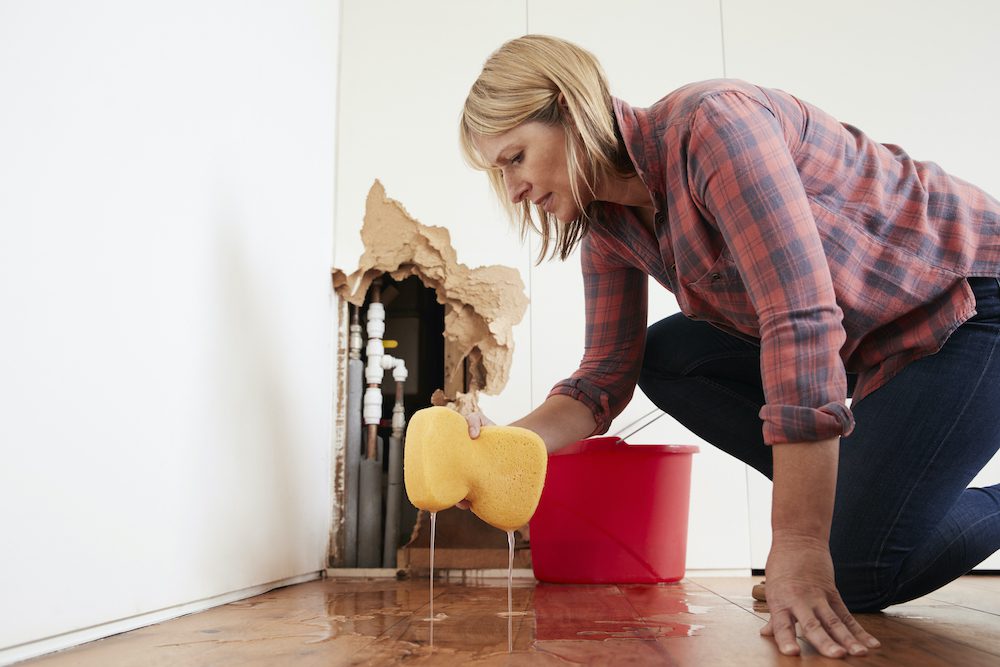We have uncovered this great article relating to Top leak detection hacks down the page on the internet and figured it made good sense to relate it with you on my blog.

Early detection of dripping water lines can minimize a potential catastrophe. Some small water leakages may not be visible.
1. Take A Look At the Water Meter
Examining it is a proven means that aids you uncover leakages. If it moves, that suggests a fast-moving leak. This means you might have a slow leak that can also be below ground.
2. Examine Water Intake
Analyze your water costs as well as track your water intake. As the one paying it, you ought to observe if there are any type of discrepancies. If you find sudden changes, despite your consumption coinciding, it implies that you have leaks in your plumbing system. Remember, your water bill need to fall under the same array each month. An unexpected spike in your bill indicates a fast-moving leakage.
A steady rise every month, even with the very same practices, shows you have a sluggish leakage that's likewise gradually intensifying. Call a plumber to extensively check your residential or commercial property, specifically if you feel a cozy area on your flooring with piping underneath.
3. Do a Food Coloring Test
When it comes to water intake, 30% comes from commodes. If the color somehow infiltrates your dish during that time without flushing, there's a leak in between the container and bowl.
4. Asses Exterior Lines
Do not neglect to check your outside water lines also. Test spigots by connecting a yard tube. Should water seep out of the connection, you have a loose rubber gasket. Change this and guarantee all connections are tight. If you have actually obtained a sprinkler system, it will help get it skillfully checked out and maintained yearly. One small leak can lose tons of water as well as surge your water expense.
5. Evaluate the scenario as well as inspect
Homeowners ought to make it a practice to check under the sink counters and also inside cabinets for any type of bad odor or mold growth. These 2 red flags indicate a leakage so punctual interest is needed. Doing routine inspections, even bi-annually, can conserve you from a major issue.
Examine for discolorations and also compromising as most home appliances as well as pipes have a life span. If you presume dripping water lines in your plumbing system, do not wait for it to rise.
Early detection of leaking water lines can minimize a prospective calamity. Some tiny water leaks may not be visible. Examining it is a surefire means that assists you uncover leaks. One tiny leakage can throw away loads of water and also spike your water expense.
If you presume leaking water lines in your plumbing system, don't wait for it to intensify.
How to Know If Your Home Has a Hidden Leak
Water Meter Reveals Inexplicable Water Usage
If you’d like to test whether or not there’s a leak somewhere in your home, you can do this using your water meter. Here is how to conduct the test:
Don’t use any water in your home for at least 30 minutes; this also means not turning on faucets or water-using appliances.
Go outside, and check your water meter for activity.
If your water meter shows that there was activity, even though no one was using any water, this proves that there is a leak in your home.Visible Mold or Mildew Growth
Leaks behind walls create moist, dark environments that allow mold and mildew to grow and thrive. Eventually, you might see mold growth forming on the wall closest to a hidden leak.
If mold is growing in an area that receives a high amount of moisture, such as a bathroom, it may simply be an indication that better ventilation is needed. However, if you see mold growth on a wall or the ceiling in an area where you would not expect, you probably have a hidden leak.
Musty, Mildew Odor
Sometimes you might not be able to see the mold or mildew that is growing as a result of a leak. However, the smell can give the problem away just as easily. If you catch a whiff of something musty, there’s a good chance that old water is collecting somewhere in your home that you can’t see.
Stained/Warped Walls, Ceilings, or Floors
When your home soaks up water, a variety of red flags can become visible, including ceiling stains, bubbling drywall, warped walls, and sagging floors. While these issues can be caused by excess humidity, they can also be signs that a pipe or plumbing connection has started leaking behind your walls.
Inexplicably High Water Bill
After a while, you get a general sense for what your water bill should be. If you own a pool or sprinkler system, your bill will tend to be higher during summer. However, if you receive a water bill that seems especially high, and you can’t figure out what caused it, then you may have a hidden leak somewhere that’s increasing your bill.
https://www.plumbingjoint.com/blog/2019/july/how-to-know-if-your-home-has-a-hidden-leak/

Do you like reading about Hacks to detect leaks? Make a remark directly below. We'd be delighted to see your views about this blog entry. In hopes that you visit us again in the future. Do you know another individual who is occupied with the topic? Be sure share it. Thanks a lot for going through it.
Professional plumbers, immediate response.